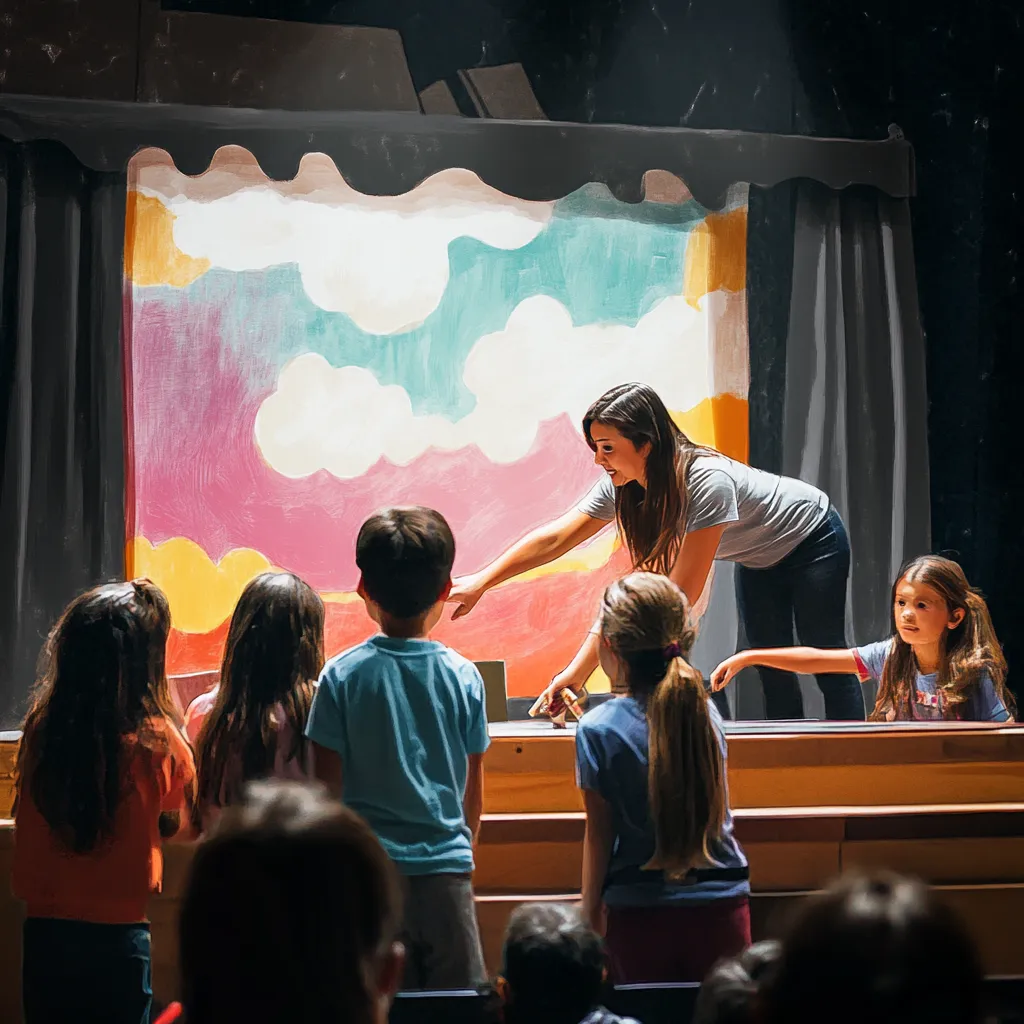
Tech Theater Isn’t Optional, Even in a No-Tech Show

You’d think that a “no-tech” show would leave a tech theater teacher like me out of the picture. But you’d be wrong.
A few years ago, I found myself on a production with zero technical elements by design. And honestly? It fascinated me. I’m used to seeing a show through the lens of light, space, sound, and transformation.
At first, I was sure I would be a third wheel in the process. An odd limb. Then we started the process.
No Tech Doesn’t Mean No Vision
I realized that my design brain still mattered. My students’ tech experience still mattered. We weren’t building flats or hanging lights, but we were still telling a story. And how we told it visually, even with minimal tools, was still our job.
The lesson? Tech theater isn’t about having all the gear. It’s about how we see the story. And that’s something we can and should teach students, no matter the scale of the show.
You Always Belong at the Table
Directors, if you’ve got a small show or a low budget, don’t bench your tech crew. Invite them in. Ask how the atmosphere can be shaped with the tools you do have or want to use. Let them contribute their lens, even if it’s not attached to a light board. We know that "another set of eyes" is critical in our process. Your students' perspective is equally valuable, and often unique, as they don't come into the process with the preconceived ideas of what is possible.
Action Step: Teach Visual Storytelling
Use low-tech shows to focus on design thinking. Let students pitch ideas based on theme, tone, and emotional impact. Teach them that their creative eye matters, no matter the budget or the intent.
The Idea in Practice
What does this look like really? Here are a few examples.
We performed a small segment of a show in a convention center ballroom. We very fortunately had brought a laptop with our music along. We had it so we could rehearse a little in the hallway beforehand, but it was a good thing we brought it. The files that the venue had received for our performance wouldn’t open on the sound system of the room. Good thing our sound guy was there, too.
So many people think “t-shirts and jeans will be so easy for costumes”. I honestly have an inner eye roll when I hear that. Costumes help define character, so even shows that use “only t-shirts” need to consider color, what, if anything, is on the shirt, what images or fonts, and even what sizes for each character. All of those choices can have a huge impact on how the audience receives the story. Simple and easy are not the same.
When we traveled a low tech show to elementary schools, lighting was a huge issue. We only had the overhead lights in the room. From a designer’s perspective, making sure the audience can see facial expressions is key. So we experimented with what banks of lights would give us the best illumination, which ones we could turn off to create mood, and still have effective light for the show and an atmosphere for the students that made the experience special.
The Tech Always Matters
Remember, even “low tech” or “no tech” shows still need coherence and unity to best tell the story, and that’s where your tech people (designers and implementers)can be part of the process. And when you travel, include them there too. They will be your biggest cheerleaders in the audience, knowing they helped make the moment that much better.
If you’d like more ideas on how to include your technicians throughout your process, join our Facebook Group, Backstage AIC. See you there!